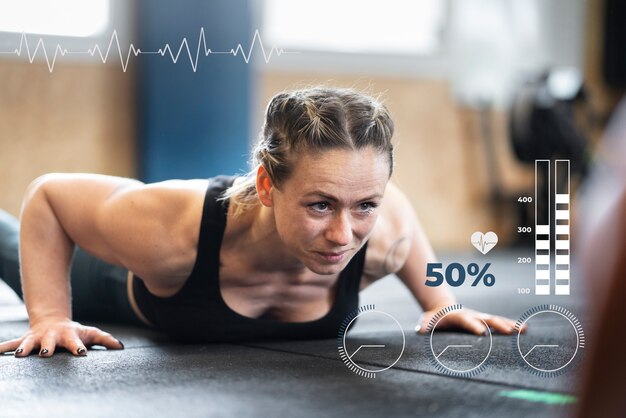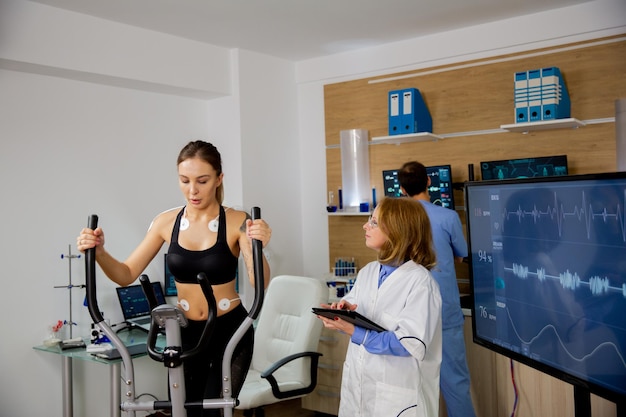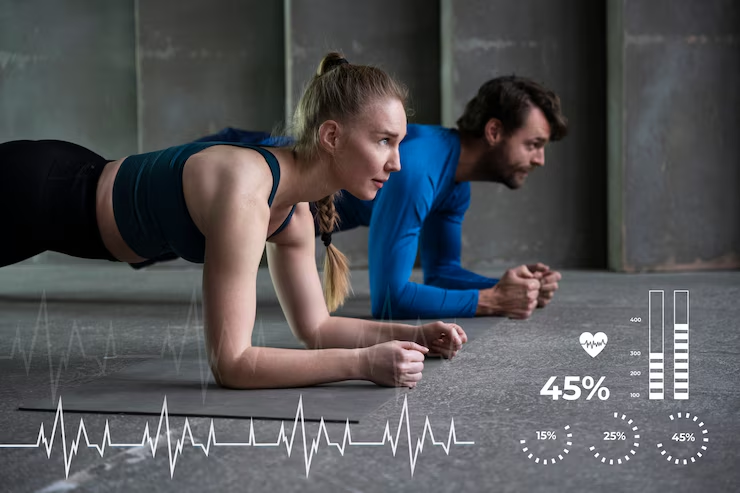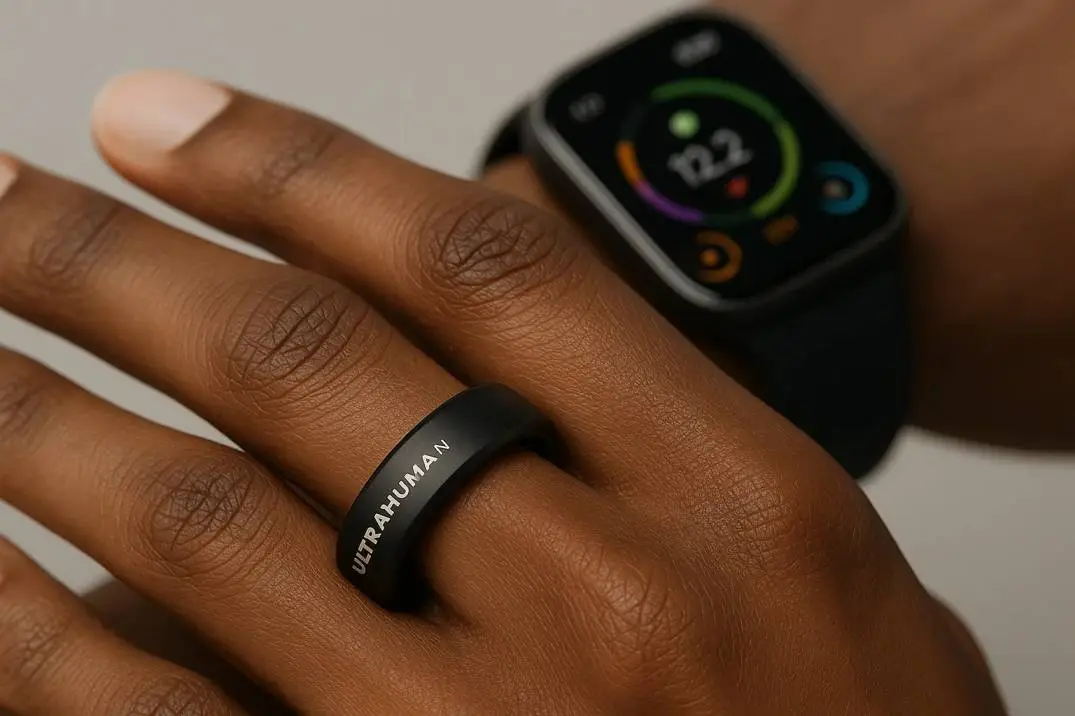The Brockport Physical Wellness Test (BPFT) checks the health of young people with disabilities. The BPFT is different from regular fitness tests. It considers changing abilities. It's thorough and flexible and focuses on promoting lifelong movement and wellness.
So, you’re curious about the Brockport physical fitness test. It's essentially a method for evaluating disabled students' fitness. It is not, however, like conventional PE tests. It does not presuppose that everyone can jump or run. It instead considers what every individual might accomplish.
Setting individual objectives, promoting movement, and creating good habits are the main priorities. It's not about scores or contrasts. It's about feeling capable and improving over time. That’s why this test champions physical fitness, wellness, and lifestyle in a genuinely inclusive way.
What Is the Brockport Physical Fitness Test?

The Brockport Physical Fitness Test, or BPFT, was made at SUNY Brockport in New York. Teachers in adapted PE classes use it. There are many test options—over twenty. But each student does just a few, picked to fit their abilities.
Read Also: Traditional Yoga Dress for Men: Comfort Meets Culture on the Mat
The BPFT is a criterion-referenced test created at the State College of New York in Brockport. We plan to assess the physical wellness of children and young people aged 10 to 17.
This includes people with disabilities like:
- visual impairments
- mental disabilities
- spinal cord injuries
- other physical challenges
The goal is not to compare people to others. Instead, we want to look at their wellness based on well-being measures and personal abilities.
In Indian Class 12 PE, students learn roughly what the Brockport Physical Fitness Test Class 12 is. They explore how to choose tests, why they're used, and how they respect diverse learners.
The 5 Components of Physical Fitness
Fitness is more than just running. It includes five key parts. The BPFT looks at these in ways that fit each student.
1. Muscular Strength: How much force your muscles can produce in one go. Things like pushing or pulling.
2. Muscular Endurance: How many times your muscles can work before tiring. Like holding a position or doing repeated movement.
3. Cardiovascular Endurance: How well your heart and lungs support activity. Walking, wheeling, and swimming count here.
4. Flexibility: How much you can bend or stretch without pain. Helps prevent injuries.
5. Body Composition: What your body is made of’fat, muscle, and bones. It isn’t about weight alone. Each student in the Brockport Physical Fitness Test may be tested in some of these. The selections depend on mobility, goals, and comfort.
How the Test Works in Real Life?

Imagine a student who uses a wheelchair. They might do a six-minute push test instead of a mile run. Another might do upper-body strength exercises. Teachers choose from 20+ items. Usually four to six tests per student. The idea: understand what they can do, then help them get a bit better. There’s no failing here. Just progress.
Why Does It Matter So Much?
If you’ve ever seen fitness tests where students with disabilities are left out or asked to watch, you know how unfair it feels. The BPFT is different. It says, You matter. Your body matters. The aim is to create confidence, not comparisons.
Read Also: Gen Z Fitness in Kerala: How Youth Are Redefining Health in 2025?
The test encourages awareness of physical fitness, wellness, and lifestyle, without pressure. In real classrooms, this test isn’t just about numbers or charts.
It concerns providing disabled pupils the respect and care they usually miss in physical education. One instructor could subtly modify an activity so a student in a wheelchair may continue to participate. Another could applaud a child who does five curl-ups just as heartily as they would for someone who does twenty.
These are times to make every student feel seen and supported, not times to meet national norms. For some youngsters, the gym becomes their home first. That's what the Brockport Physical Fitness Test really alters. Not bright. It's individual. And it continues with them long after the lesson is completed.
For a country like India, where inclusion in education is still developing, this sort of method can greatly alter things. It shows prospective teachers how to approach patience, flexibility, and compassion. You merely change your method of reaching standards; lowering them is not necessary.
That kind of thinking creates better teachers and stronger students. And honestly, it makes PE more real. The goal isn’t to build athletes. It’s to help kids build a relationship with their own bodies, one that feels good, honest, and encouraging.
What the Diagram Means?
In textbooks, you may see a Brockport Physical Fitness Test diagram. It shows how the test is planned. Think of it as:
- Step 1: Assess the student's current physical ability.
- Step 2: Select fitness areas (like strength or endurance).
- Step 3: Choose the test items that fit.
- Step 4: Conduct the tests.
- Step 5: Evaluate results and set goals.
That’s it. Simple. Clear. Student-centered.
What Class 12 Students Learn?
In Class 12, many boards teach about what you mean by physical fitness. It’s not just muscles or running. It’s how the body functions every day. How able it is. How healthy. They learn that fitness is multi-dimensional.
They also study what the Brockport Physical Fitness Test Class 12 level is. This teaches how to adapt tests for different needs. It’s essential for future teachers, coaches, or even parents. It shows how fitness can be inclusive.
A Real-Life Example
In a class, student A walks. Student B uses a wheelchair. Both get tested. Student A might do a mile walk. Student B does upper-body push tests. Both are working towards goals. Both get feedback. Both feel included. That equality—physical and emotional is the heart of BPFT.
Everyday Impact
Fitness is not only something for school. It is one component of daily life. Carrying books, walking to class, hanging around friends. BPFT supports pupils developing daily habits not only on test day that will benefit them. It teaches: small successes count. Maintaining a plank for a longer time. Increasing stretching distance. More energy felt. The real triumphs are those.
The Brockport exam distinguishes itself not only by its adjustment for various skills. It develops a different type of classroom atmosphere where efforts receive more notice than results. Students are urged to see their own development rather than to compare grades with others.
This changes how they view fitness over time. Something you do for your own well-being, not because someone else told you to. Teachers frequently point out that this exam improves their ability to relate with their pupils.
It starts genuine chats: How does your body feel today? What is brockport physical fitness test class 12? What felt difficult? Those questions teach children to tune in to recognize their limits, stretch lightly past them, and feel proud of even little improvement. You start to notice changes beyond the gym when that mentality develops across a year or more. Improved disposition. More belief.
Kids raising their hands in other classrooms. More frequently say, "I'll try." This is a tool for developing pride, drive, and trust, not just a test. Though it begins with movement, the lessons branch out in all directions.
For institutions striving to be more inclusive and more human, this sort of initiative should be a baseline rather than a bonus. Though not perfect, the Brockport Physical Fitness Test is thoughtful, caring, and ability-focused rather than constraint-based. It first sees humans, then disabilities.
Final Thoughts
The Brockport Physical Fitness Test isn’t perfect. But it’s thoughtful. And caring. It focuses on ability, not limits. It sees people first, not disabilities. It offers a roadmap to healthy habits. A path to confidence. A chance to belong. And that's what inclusive physical education should be about.













